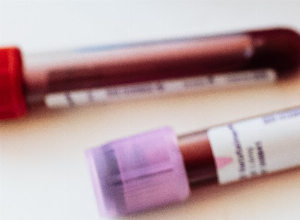How does the sun affect lupus?
Published 10 May 2023 • By Marion Moulin
Systemic lupus erythematosus (SLE) or simply lupus, is a chronic autoimmune disease. In some cases, a viral infection, stress, exposure to the sun or pregnancy (due to hormonal changes) can trigger lupus, or rather "wake it up" by some as yet unknown mechanisms.
Sun sensitivity is a characteristic symptom of lupus, and sometimes the first sign of the disease.
So how does the sun affect lupus? Why is it recommended not to expose yourself to the sun when you have lupus?
We explain it all in our article!

What is lupus?
Lupus, also known as systemic lupus erythematosus, is a chronic autoimmune disease.
The clinical signs of lupus vary from person to person. The name lupus (Latin for wolf) refers to a wolf mask rash, a characteristic symptom of the disease.
It affects several parts of the body: joints, skin, kidneys, heart, lungs, blood, and the brain. The immune system attacks healthy cells and tissues, which can cause inflammation and tissue damage.
There is no cure for lupus, but treatment can help control the symptoms and prevent complications. Treatment options may include immunosuppressive drugs, corticosteroids, non-steroidal anti-inflammatory drugs (NSAIDs) and antimalarial drugs.
How does the sun affect the skin?
Sunlight is broken down into three elements:
- Visible light (the one we see),
- Infrared radiation (which provides the heat),
- UV radiation (which is invisible).
UV rays include UVA and UVB.
UVA rays penetrate deeper into the dermis and are mainly responsible for pigment spots, skin ageing and wrinkles.
UVB penetrates less deeply and is responsible for sunburn, blisters and most skin cancers.
Photosensitivity, sometimes called "sun allergy", is an immune system reaction triggered by sunlight. Sunlight can trigger immune reactions: people develop itching or redness and inflammation of the skin which has been exposed to the sun.
For a person affected by an autoimmune disease, simple exposure can lead to various disturbances because ultraviolet light increases the activity not only of the skin disease but also of the internal systemic disease. This applies to all skin types. The harmful effects of the sun on the disease may not be immediate, and can occur only after the summer period is over.
How does the sun affect lupus?
Sun sensitivity is a symptom found in a large number of patients and is frequently one of the first signs of the disease.
The link between ultraviolet (UV) light and lupus flares is well known: after sun exposure, people with systemic lupus erythematosus (SLE) frequently develop skin rashes, which are often accompanied by a flare-up of the disease as a whole.
Exposure to the sun can cause butterfly erythema: a butterfly-like rash that appears on the bridge of the nose and on the cheeks in a symmetrical pattern. Rashes can appear on the arms, upper torso, back of the hands and other sun-exposed areas.
When exposed to light, the skin of lupus patients may overreact.
This is because people with lupus have a poorly functioning lymphatic system and which contributes to both photosensitivity - an increase in the skin's sensitivity to sunlight -, and an immune response in the lymph nodes that causes a flare-up of the disease.
UV (ultraviolet) radiation from the sun can worsen some symptoms or lead to the development of new symptoms such as severe fatigue and joint pain. These symptoms may occur several weeks to months after the date of exposure.
What can lupus patients do about their exposure to the sun?
Health authorities advise against sun exposure for patients with systemic lupus erythematosus.
However, if you are going to be in the sun for some time, here are some recommendations you should follow:
- Avoid the hottest hours of the day (between 11am and 4pm).
- Wear sun protective clothing.
- Wear a broad-spectrum sunscreen with a very high SPF (greater than 50) on all exposed areas and reapply every two hours. Patients with lupus who have never had skin manifestations should also use sunscreen.
- Be careful with artificial light sources such as UV bulbs.
- Be careful with certain photosensitising drugs. Some anti-inflammatory drugs should be avoided when you have to be exposed to the sun for a certain period of time. These are drugs that cause an abnormally exaggerated reaction of the skin to sun exposure, characterised by red patches that look like sunburn.
To sum up, it is still possible to go out in the sun if you have lupus, but this must be done with caution and with appropriate protective measures to avoid worsening the symptoms.
Give it a "Like" and share your thoughts and questions with the community in the comments below!
Take care!
Sources :
Comprendre le lupus, Améli
Puis-je m’exposer au soleil avec un lupus ? Rhumatismes
Le soleil et la peau, Dermato infos
Pleins feux sur la photosensibilité et le lupus, Apropeau
Le Lupus, Carenity
Comments
You will also like

Fifteen percent of osteoporosis patients who take 'drug holidays' suffer bone fractures
7 May 2018 • 8 comments

 Facebook
Facebook Twitter
Twitter

